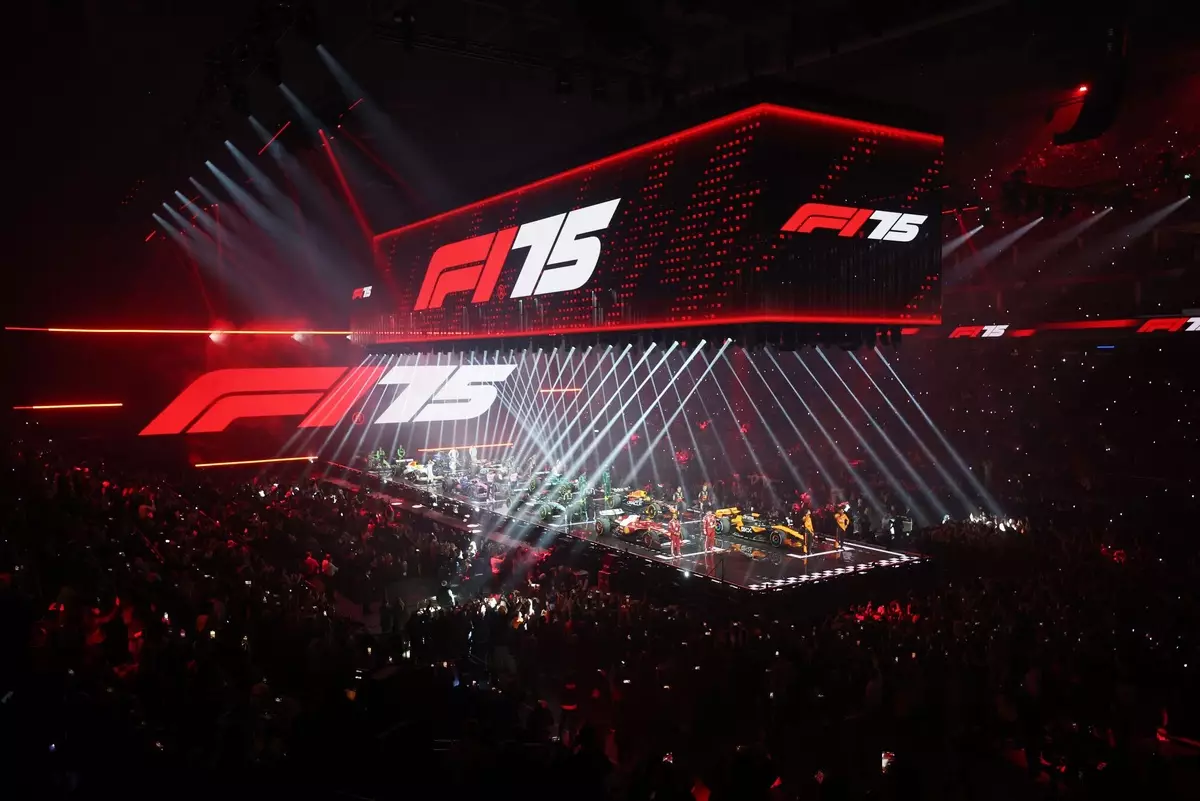In the ever-evolving world of sports entertainment, Formula 1 has emerged as a significant player seeking to revamp its image. The recent livery launch event at London’s O2 Arena showcased not just the latest team designs but also the league’s intention to broaden its appeal. With more than just a handful of die-hard fans in attendance, the event was mixed with enthusiasm, critical observations, and a vibrant atmosphere—elements that mirror the high-octane thrills of a live race. However, amidst the cheering and loud proclamations, one could sense an undercurrent of dissatisfaction from traditionalists who view this modern twist as a departure from the sport’s respectful and serious origins.
The nightclub-like vibe of the O2 Arena was a stark contrast to the conventional car launch procedures, which have historically involved technical presentations and team statistics. Instead, the evening saw celebrity hosts and a theatrical flair that stirred mixed emotions. While the younger demographic might find this approach refreshing, veteran fans might feel alienated—a sentiment cleverly highlighted by comedian Jack Whitehall, who cheekily acknowledged the likely groans of F1 purists. This acknowledgment rightfully points to the larger discourse at play: the balance F1 must strike between honoring its legacies while simultaneously drawing in fresh enthusiasm.
Fan Reactions and Theatricality at the Forefront
The event held at the O2 Arena undoubtedly succeeded in captivating an audience that included more casual fans who have yet to experience the thrill of a racetrack. Lewis Hamilton’s remarkable entrance, adorned in the classic hues of Ferrari red, signified the moments artists dream of—a star capturing the spotlight. His crowd-pulling presence reaffirmed the continued fascination with some of F1’s most iconic figures. Conversely, the sheer booing directed at Red Bull Racing chief Christian Horner and driver Max Verstappen illustrated the sport’s dramatic storytelling, akin to a theatrical performance where rivalries take center stage.
In an era defined by Netflix’s *Drive to Survive*, personalities have increasingly become as pivotal as performance metrics. The event at the O2 Arena seemed to lean into this narrative, where rivalries and past grievances were playfully revisited for the amusement of the onlookers. Whitehall’s quips, bridging humor and competitiveness, evoked laughter and deepened the narrative about these characters; what one might call the pantomime aspect of the event brought an engaging dynamic rarely seen in traditional formats.
However, the evening wasn’t without its criticisms. While the individual presentations certainly dazzled in their own ways, from Aston Martin’s James Bond references to McLaren’s nostalgic nods to its championship-winning legacy, there was a conspicuous absence of substance when it came to the junior leagues of the F1 ecosystem. The F1 Academy and its sister series, Formula 2 and Formula 3, were overshadowed in favor of a more streamlined, visually appealing production. It raises an essential question: can the glitz of a carnival overshadow the importance of fostering the future talents of motorsport?
Additionally, the absence of a live car ‘fire-up’—a traditional spectacle that fans anticipate—hinted at the event’s overly curated nature. This small element would have infused some of the raw energy typically associated with motor racing, reminding the enthusiastic crowd of the engine roars they crave. Missing out on this immersive experience, coupled with only a highlight reel showcasing junior championships, leaves audiences reminiscent of what truly sparks their passion for racing—tangible vehicles screaming into action.
While the livery launch event was undoubtedly a milestone in F1’s mission to entertain a diverse audience, it’s clear that there remains a fine line between spectacle and substance. Organizations seek to innovate, and the gamble taken by F1 to pivot its image has proved cautiously successful. Though purists may cringe at the rising theatrical elements, it’s paramount for the sport to foster new fans and adapt to an audience that craves excitement beyond the conventional.
As F1 looks towards the future, it must continue to embrace this duality. Traditional foundations should be respected even as the glittering veneer of modern celebrity culture shines brightly. Identifying how to effectively engage new audiences while cherishing the sport’s essence will be pivotal for leaders within Formula 1. Their journey toward a harmonious blend of entertainment and sporting excellence is imperative for the sport’s long-term vitality. Success will ultimately be measured not just in revenue growth or viewership numbers, but in the sustained passion that keeps fans returning for more, both at the track and on the screen.

